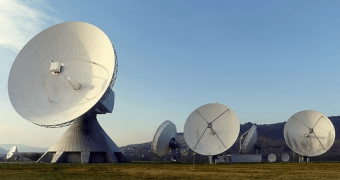
Swedish telecom company Ericsson is betting big on India's long-term growth prospects, following recent network deals with Bharti Airtel and Vodafone Idea. Borje Ekholm, President and CEO of Ericsson, said a financially stronger Vodafone Idea would become a more competitive player, contributing to a healthier market structure.
Also Read: Ericsson–Lenovo Patent Deal, Odido 5G Experience, CelcomDigi AI Network Push, and More
Ericsson's Strategic Focus on India
In an interview with Moneycontrol, Ekholm reaffirmed India's strategic importance to Ericsson, highlighting the country as its largest global employee base with over 22,500 staff. He noted that the company aims to be a "domestic champion" in India by strengthening local partnerships with telecom operators, startups, and academic institutions.
Ericsson's growth in India had slowed after an unprecedented 5G rollout in 2023, which led to market saturation in the short term. However, Ekholm remains optimistic. "The underlying demand for wireless connectivity in India continues to grow," he said, according to the report. While near-term growth may be modest, Ericsson sees strong fundamentals driven by high and rising data consumption.
"It's important to remember the unprecedented scale of the 5G rollout in India—probably the fastest scale-up anywhere in the world, which we saw in 2023 and into Q1 2024. That naturally had an impact, and you could see it reflected in the negative numbers for our market area of Southeast Asia, Oceania, and India," Ekholm said, speaking on the company's growth prospectus.
Also Read: Vodafone Idea Claims 5G Is Used by 70 Percent of Eligible Users in Mumbai
The CEO welcomed the Indian government's recent equity conversion in Vodafone Idea, calling it a positive step towards financial stability and increased competitiveness in the telecom sector. He also reiterated support for a three-player market structure, suggesting it aligns better with India's scale and can drive sustainable investment in new technologies. "But if you look at global markets, having too many players usually leads to underinvestment in new technology," he added.
"It's hard for me to say how this development will change the organisation—that's a question for Vodafone Idea. But I do believe that a financially stronger Vodafone Idea, with better equity, will be a better and more competitive company," Ekholm reportedly said, speaking on the recent conversion of dues into equity by the Government of India in Vodafone Idea.
Monetisation Saturation: Telcos Have Reached a Saturation Point with Limited Monetisation Prospects?
True 5G Monetisation with 5G SA
On monetisation, Ekholm said true 5G monetisation will emerge through network slicing and standalone 5G networks, which can offer differentiated services such as low latency and high reliability. Fixed Wireless Access (FWA) is already gaining traction in India, and enterprise use cases—like digital manufacturing—are beginning to materialise.
"Globally, we're already seeing some progress—for example, T-Mobile is using network slicing in the US and Singtel in Singapore. So monetisation, which we've long talked about, is finally becoming a reality. I'm optimistic that it will come to India as well. The key to unlocking this potential is standalone 5G. It will take some time for operators worldwide to fully roll that out, but once they do, we’ll see real use cases that can drive monetisation," the report quoted the CEO as saying on the prospects of monetisation with telecom partners.
"So far, 5G has mostly served as a capacity boost for 4G. True monetisation comes when you can offer specific network characteristics—like latency, reliability, and speed—through slicing. That's when new services can emerge and be monetised effectively," the Ericsson CEO added, as per the report.
Also Read: 5G Yet to Create New Revenue Streams for Telecom Operators, Says Airtel Executive: Report
FWA is First Possible Killer App for 5G
"One example is fixed wireless access (FWA), which is beginning to gain traction in India. It's possibly the first "killer app" for 5G, and customer response has generally been positive," Ekholm explained, as per the report.
"We're also starting to see enterprise applications using 5G to digitise manufacturing. For example, we recently had a win with Jaguar Land Rover in the UK, and since that's affiliated with India, it's relevant here too. It's still early days, but we're starting to see real use cases. That said, in telecom, you often don't recognise the "killer app" until after it emerges—because the infrastructure needs to be in place first," Ekholm added.
6G Technology
Ericsson is also investing in next-generation technology, with significant resources already allocated to 6G R&D. While standardisation is expected to begin in 2026 and commercial deployment by 2030, Ekholm reportedly stressed that fully realising 5G's potential remains the current priority.
Also Read: Monetising 4G and 5G: Key Takeaways to Date and What’s Next?
Innovation Through Network APIs
The company is also working through its global joint venture, Aduna, to unlock new revenue streams via network APIs. With Indian operators like Reliance Jio and Bharti Airtel onboard, Ericsson plans to empower local developers and startups to build innovative applications on top of 5G networks.
"That's the exciting part—it [Network APIs] creates a platform for building entirely new services, which will drive an innovation ecosystem in India," Ekholm said, per the report.















